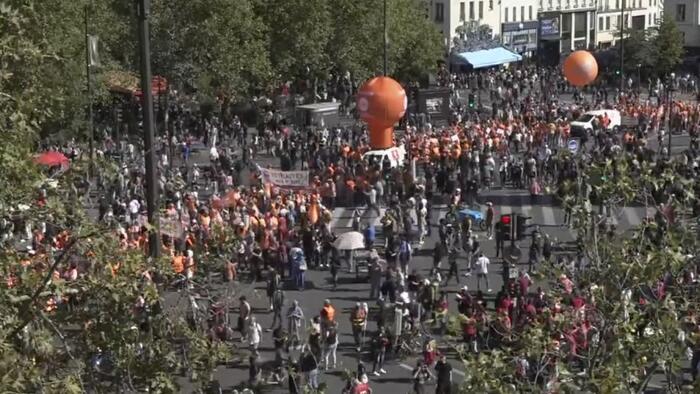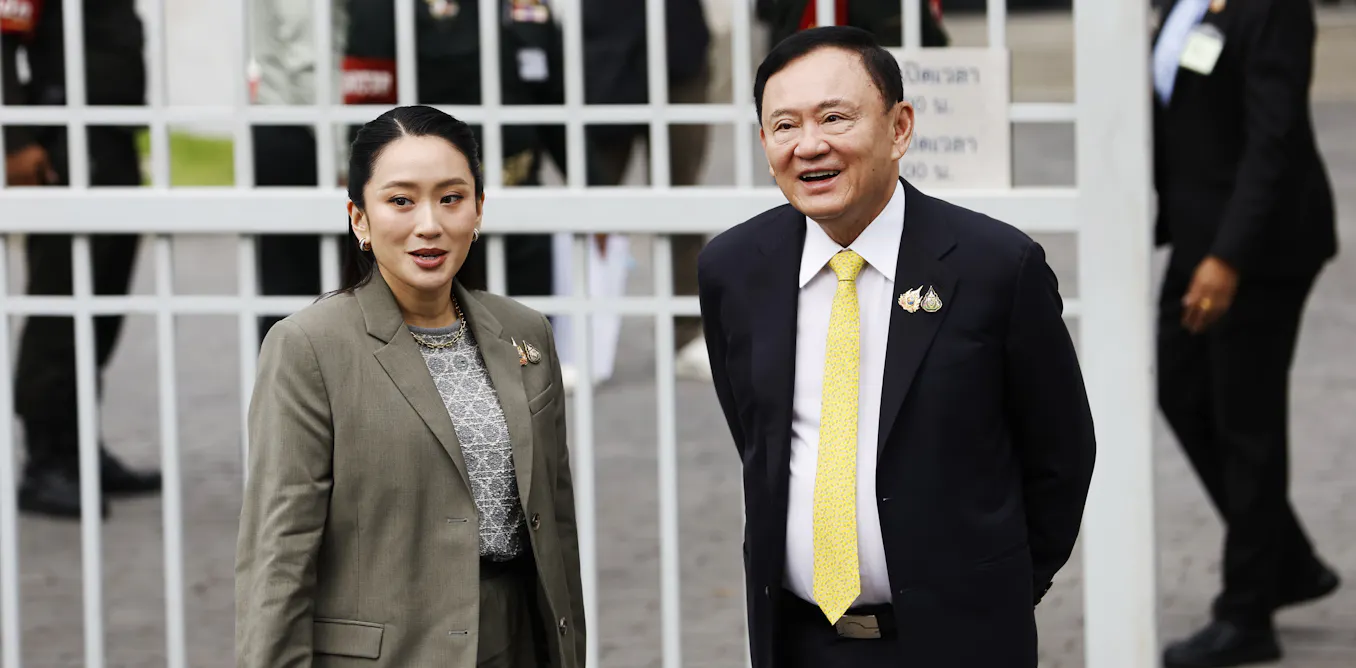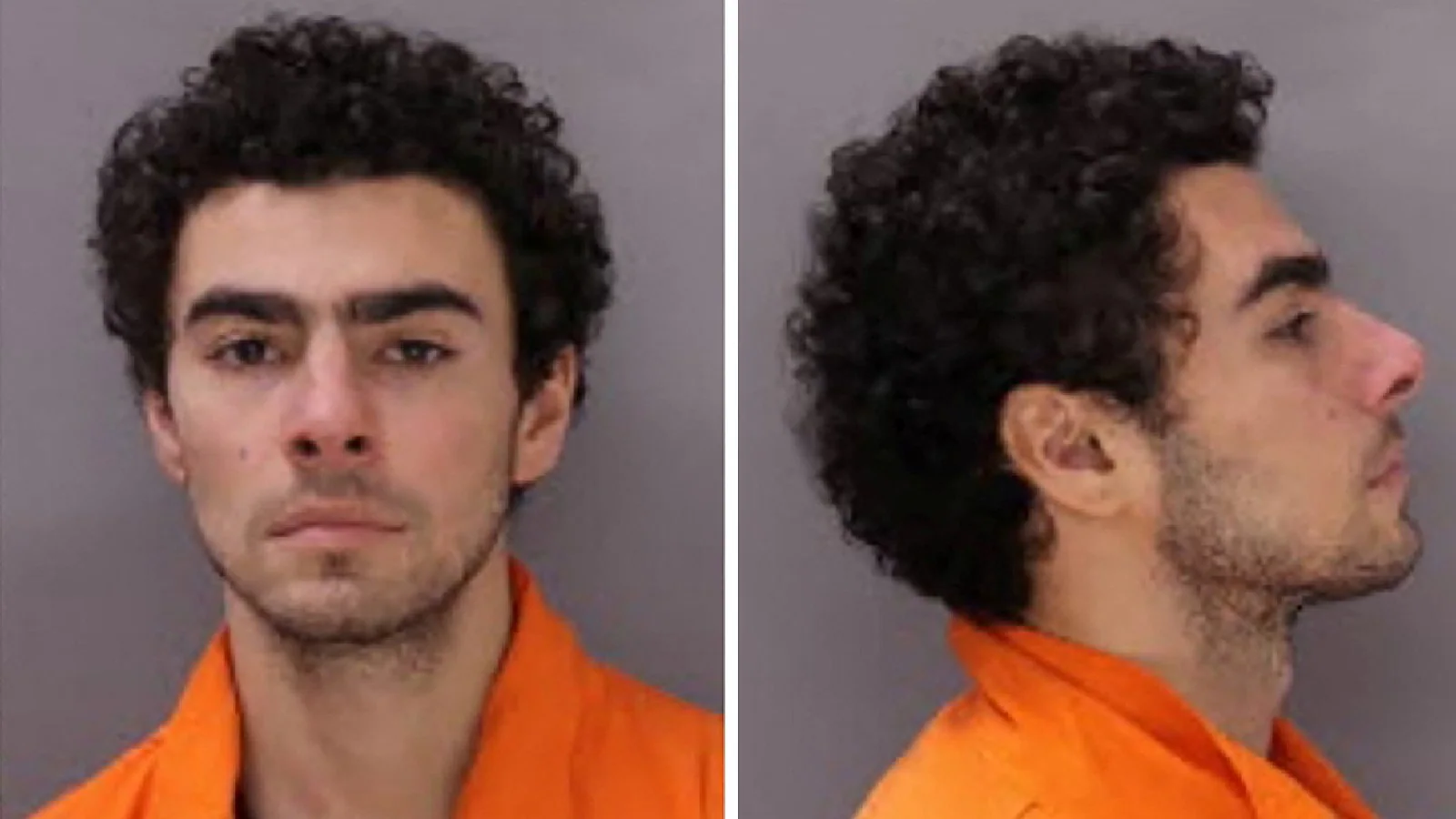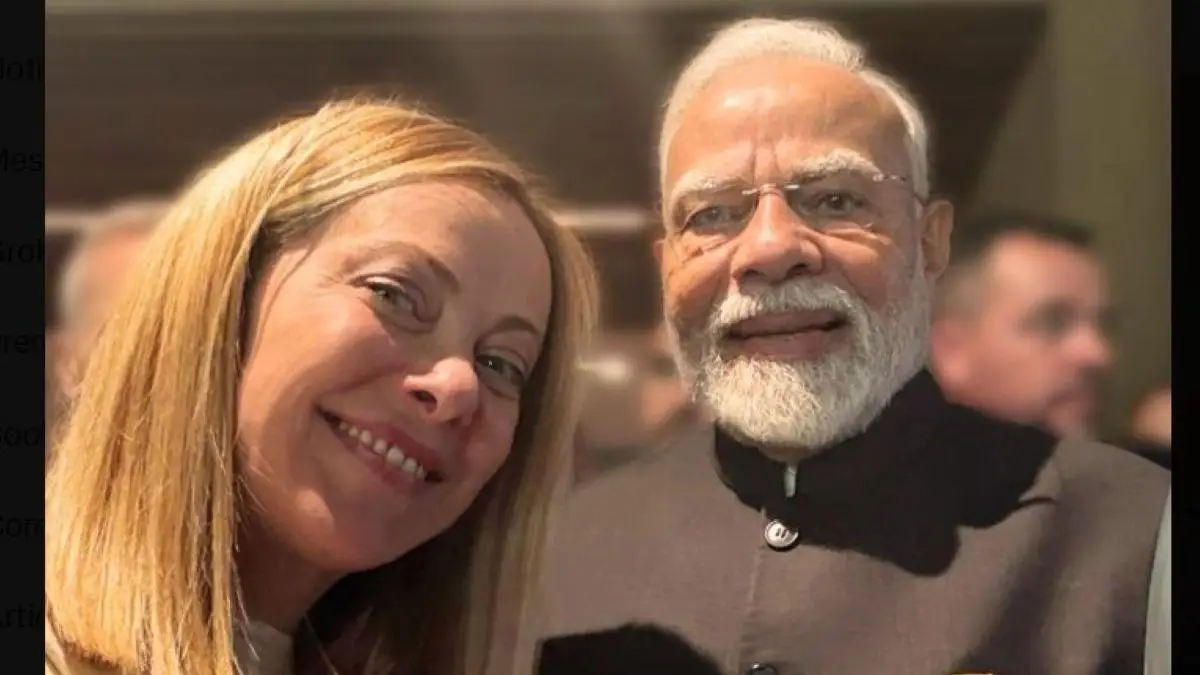
The day of upheaval for the European Union’s second-largest economy aimed to turn up the heat on new Prime Minister Sébastien Lecornu and his boss, Macron. They’re engaged in an intensifying battle both in parliament and on the streets about how to plug holes in France’s finances, with opponents fighting proposals to cut spending on public services that underpin the French way of life.
Protesters’ anger at budget cuts
Macron’s opponents complain that taxpayer-funded public services — free schools and public hospitals, subsidized health care, unemployment benefits and other safety nets that are cherished in France — are being eroded by his governments that have lurched from crisis to crisis since he dissolved parliament in 2024, triggering a legislative election that stacked Parliament’s lower house with critics of the president.
Placards at the Paris demonstration read: “Tax the rich.”
“We need to find money where there’s money,” said Pierre Courois, a 65-year-old retired civil servant. “France’s deficit is an issue, but it’s not by cutting on public services that you fix it.”
“Our pay is stuck, colleagues are leaving, and wards are closing beds,” said 34-year-old public hospital nurse Stephane Lambert. “For us it’s the same story: less money in our pockets, fewer hands to help, more pressure every day.”
Lecornu’s baptism of fire
As he seeks support for belt-tightening, Lecornu has trimmed lifetime benefits for former government ministers — a largely symbolic first step that won’t generate huge savings — and scrapped wildly unpopular proposals to eliminate two public holidays, a measure intended to spur revenue. He has been meeting opposition leaders and labor unions to try to build consensus for a budget, but his close relationship with Macron puts him in the firing line, too.
“Bringing in Lecornu doesn’t change anything — he’s just another man in a suit who will follow Macron’s line,” said 22-year-old student Juliette Martin.
On his first day in office last week, anti-government protests saw streets choked with smoke, barricades in flames and volleys of tear gas as demonstrators denounced budget cuts and political turmoil. That “Block Everything” campaign became a prelude for Thursday’s even larger demonstrations.
Scattered violence
The first whiffs of police tear gas came before daybreak, with scuffles between riot officers and protesters in Paris. The collapse of successive governments — brought down by votes in parliament — that sought to push through savings has given Macron’s critics a sense of momentum. The “Block Everything” campaign that developed online before taking to the streets also added to the climate of crisis.
As it did last week, the government said it was again deploying police in exceptionally large numbers — about 80,000 in all — to keep order on Thursday. Police were ordered to break up blockades and other efforts to prevent people who weren’t protesting from going about their business.
The Interior Ministry reported 181 arrests nationwide as the afternoon ended and more than 450,000 demonstrators outside Paris, with protests in big cities and small towns. Paris police said that another 55,000 people marched in the capital. Participation estimates from the CGT, among unions that called the strikes and demonstrations, were double those of police, reporting more than 1 million strikers and protesters nationwide.



